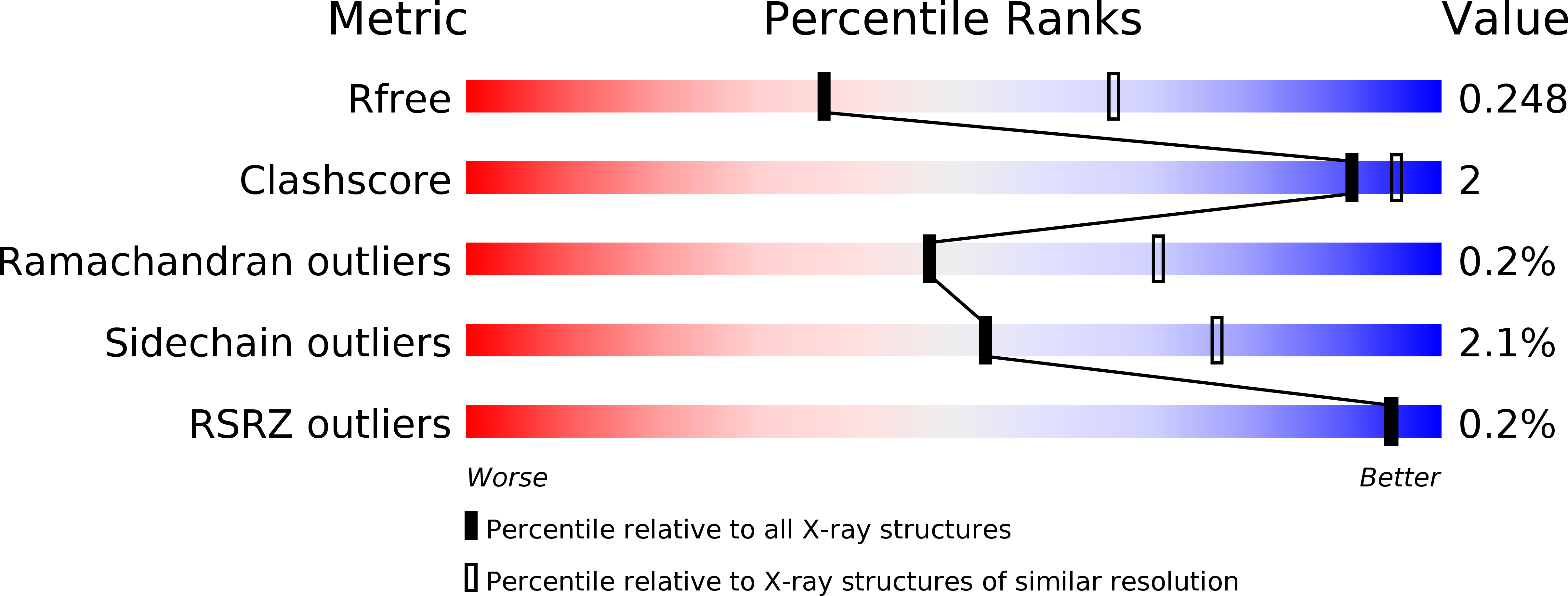
Deposition Date
2013-05-27
Release Date
2014-05-28
Last Version Date
2023-09-20
Entry Detail
PDB ID:
4KXR
Keywords:
Title:
Structure of the Mycobacterium tuberculosis type VII secretion system chaperone EspG5 in complex with PE25-PPE41 dimer
Biological Source:
Source Organism:
Mycobacterium tuberculosis (Taxon ID: 83332)
Host Organism:
Method Details:
Experimental Method:
Resolution:
2.60 Å
R-Value Free:
0.24
R-Value Work:
0.19
R-Value Observed:
0.19
Space Group:
P 61 2 2


